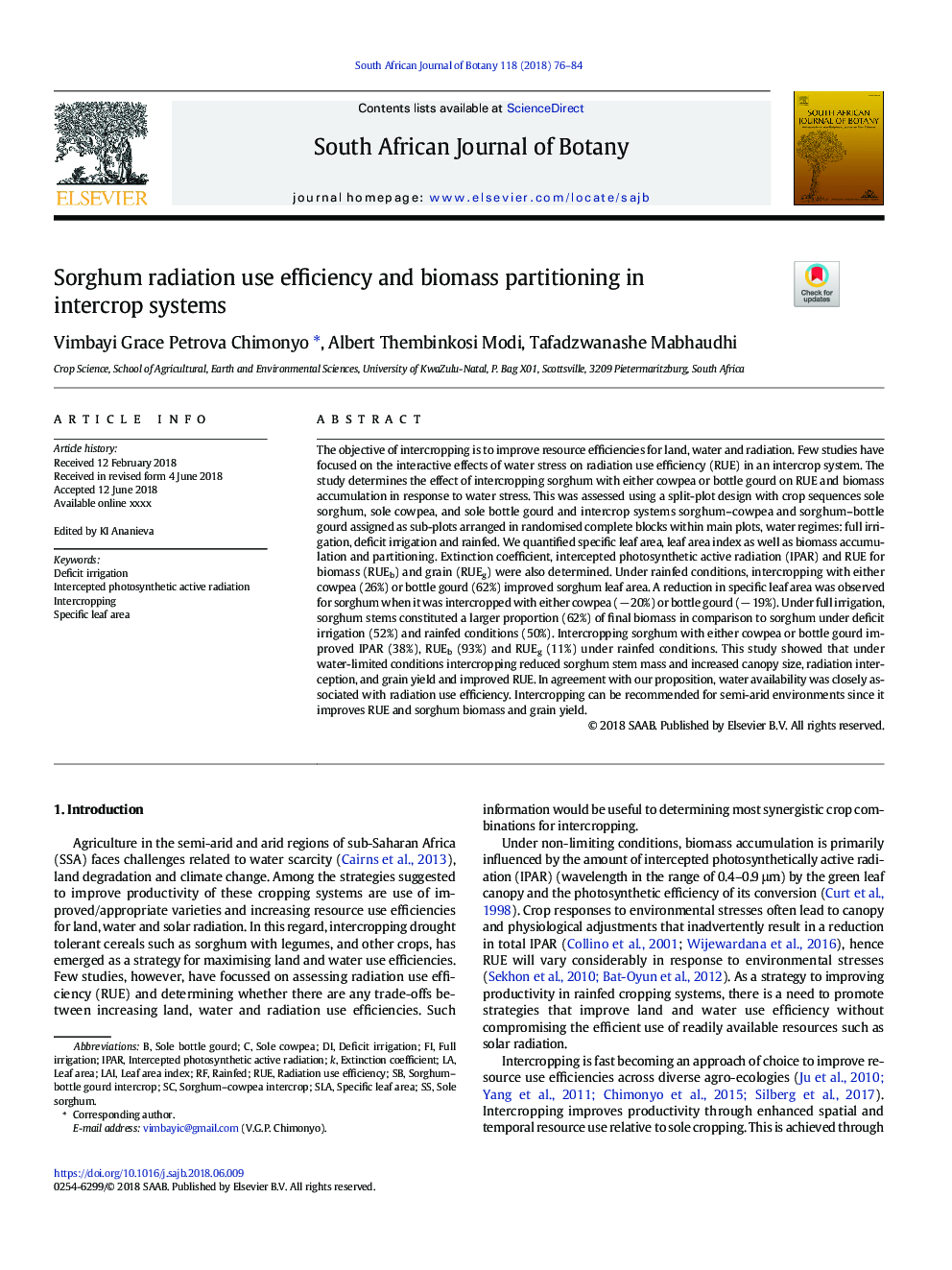| Article ID | Journal | Published Year | Pages | File Type |
|---|---|---|---|---|
| 8882211 | South African Journal of Botany | 2018 | 9 Pages |
Abstract
The objective of intercropping is to improve resource efficiencies for land, water and radiation. Few studies have focused on the interactive effects of water stress on radiation use efficiency (RUE) in an intercrop system. The study determines the effect of intercropping sorghum with either cowpea or bottle gourd on RUE and biomass accumulation in response to water stress. This was assessed using a split-plot design with crop sequences sole sorghum, sole cowpea, and sole bottle gourd and intercrop systems sorghum-cowpea and sorghum-bottle gourd assigned as sub-plots arranged in randomised complete blocks within main plots, water regimes: full irrigation, deficit irrigation and rainfed. We quantified specific leaf area, leaf area index as well as biomass accumulation and partitioning. Extinction coefficient, intercepted photosynthetic active radiation (IPAR) and RUE for biomass (RUEb) and grain (RUEg) were also determined. Under rainfed conditions, intercropping with either cowpea (26%) or bottle gourd (62%) improved sorghum leaf area. A reduction in specific leaf area was observed for sorghum when it was intercropped with either cowpea (â 20%) or bottle gourd (â 19%). Under full irrigation, sorghum stems constituted a larger proportion (62%) of final biomass in comparison to sorghum under deficit irrigation (52%) and rainfed conditions (50%). Intercropping sorghum with either cowpea or bottle gourd improved IPAR (38%), RUEb (93%) and RUEg (11%) under rainfed conditions. This study showed that under water-limited conditions intercropping reduced sorghum stem mass and increased canopy size, radiation interception, and grain yield and improved RUE. In agreement with our proposition, water availability was closely associated with radiation use efficiency. Intercropping can be recommended for semi-arid environments since it improves RUE and sorghum biomass and grain yield.
Keywords
Related Topics
Life Sciences
Agricultural and Biological Sciences
Agronomy and Crop Science
Authors
Vimbayi Grace Petrova Chimonyo, Albert Thembinkosi Modi, Tafadzwanashe Mabhaudhi,
